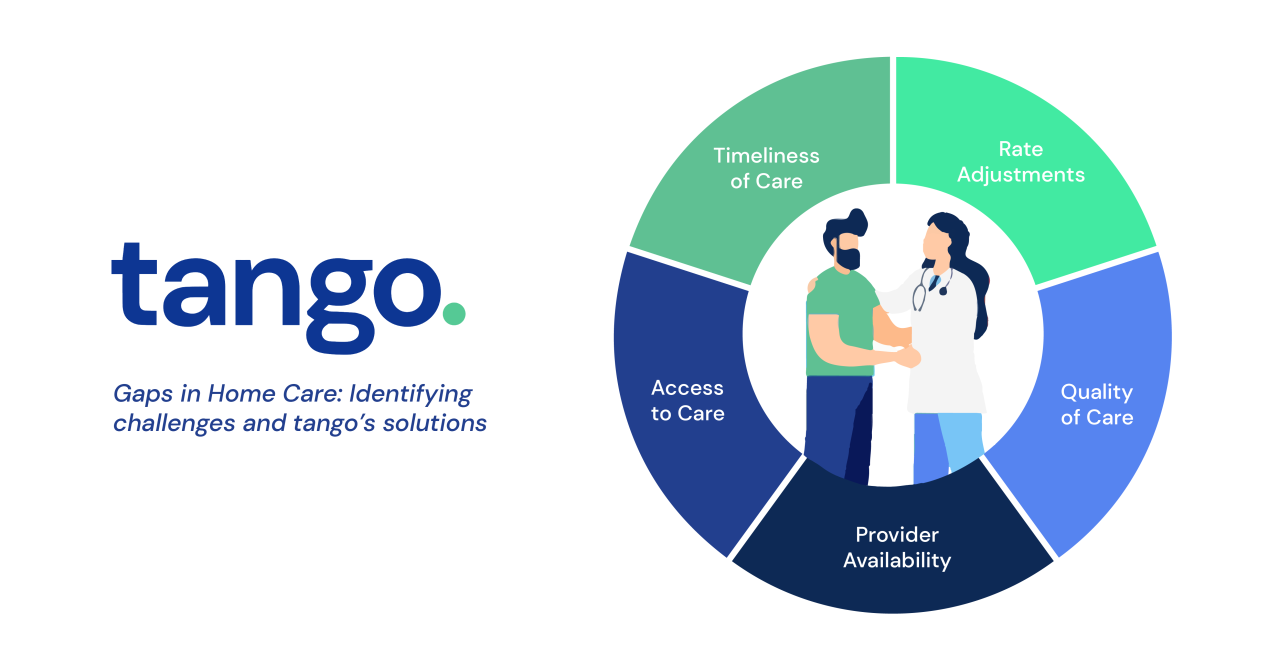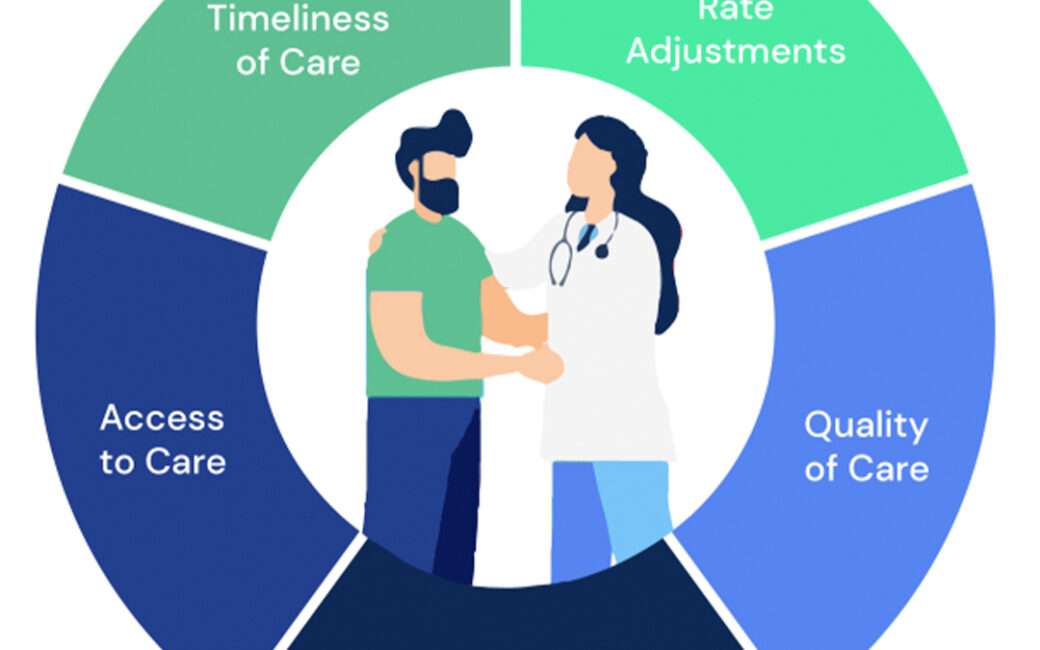Gaps in Home Care: Identifying challenges and tango’s solutions

When providing value-based, high-quality, and timely post-acute care solutions in the home, healthcare providers and networks have historically left patients unsatisfied and still in need. Whether it’s the patient experience or foundational service delivery obstacles, there persists a stigma surrounding the reliability of care in the home.
At tango, we empower the home as the site of care in everything we do. While acknowledging the stigma and sometimes a patient’s lack of trust when it comes to receiving post-acute care at home, our Chief Growth Officer, Julie Smith, notes a few of the key challenges currently hindering the expansion of Home Care across the greater health care industry, while also reiterating tango’s place as a critical and unique solution.
Access to Care
Ensuring a patient has access to home care is a fundamental challenge to providing services. Amplified by the COVID-19 pandemic, the United States is facing a shortage of registered nurses (RNs), which directly impacts a home health provider’s reliability of consistent service delivery. On top of that, McKinsey & Company recently reported that 31% of RNs were surveyed as likely to leave direct patient care positions in the next year. While tango does not directly hire patient providers such as nurses, our model encompasses a full network at each client’s disposal, efficiently connecting them with the highest-quality local and national partners.
Another challenge when it comes to accessibility of home care are the disparities in coverage and payment rates across health plans. It can be difficult for a health plan to select the “right” agency for a patient, which often creates an administrative burden. At tango, we have exclusively worked on delivering home care for over 20 years. Our tenure in clinical utilization management (UM), claims processing, paying providers directly, networking and monitoring, and more allows us to reduce fraud and waste within the administrative system while actively creating savings for members.
Quality of Care
Not all home care is provided equally. Across agencies, ensuring that a patient successfully receives home care services can mean vastly different definitions and practices. For some, it may mean providing services as quickly as possible and for others, it could be reducing the likelihood of readmittance to an acute setting. An all-encompassing model of value-based care solutions is where tango comes in. Continuously tracking the outcomes of our home care providers and using that data to learn where the gaps exist allows us to be consistent in our home care model. Additionally, after every service, we measure performance and use specific data to track every interaction with a patient. Through these thorough procedures of care, it is certainly no surprise that tango has a 98%-member satisfaction rate compared to the national average of 72%.
Timely Service Delivery
Timely initiation of care is one of the most important aspects of the care process and is directly tied to quality of care. Time is a clinical standard from the CMS, making it crucial for home health care services to swiftly provide patient care, guarantee improved post-acute care and reduce readmittance and hospitalization. At tango, we have many internal standards for timely service delivery. If our contracted agencies and partners are unable to respond to service requests according to our timeline, we adapt quickly and find another provider to guarantee a patient is taken care of as soon as possible.
While the home care landscape continues to evolve, Julie reiterates that it is our motto at tango, “enabling quality care”, that continues to be at the core of our service delivery. This mission remains true as we continue to develop innovative and unique solutions to mitigate challenges and obstacles to providing accessible, high-quality, and timely home health care services. We look forward to sharing new post-acute care products and partnerships in 2024.
